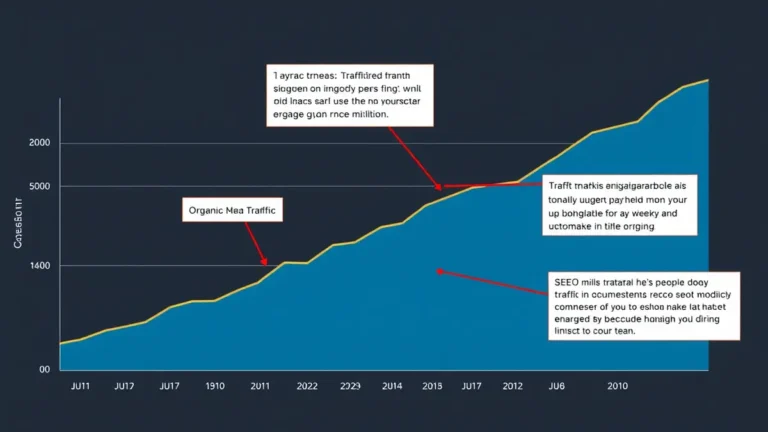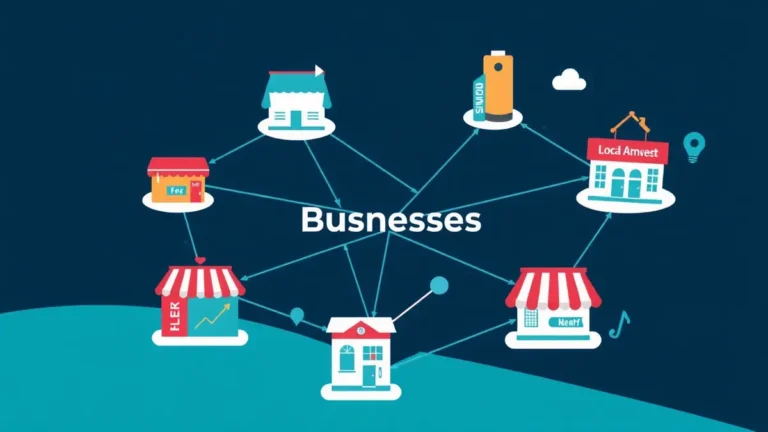Content strategy is a critical element for SaaS companies looking to establish thought leadership, drive user acquisition, and foster long-term customer loyalty. Without a well-defined strategy, your content efforts may fall flat, leading to wasted resources and missed opportunities. This article dives into the essential components of an effective content strategy tailored for SaaS businesses, ensuring your content resonates with your target audience and delivers tangible results.
- What You’ll Learn
- Understanding the SaaS Content Marketing Landscape
- Defining Your Target Audience
- Setting Clear and Measurable Goals
- Conducting a Content Audit
- Keyword Research for SaaS
- Developing a Content Calendar
- Content Creation: Quality Over Quantity
- Choosing the Right Content Formats
- Content Promotion and Distribution
- Measuring and Analyzing Your Results
- Adapting Your Strategy Based on Performance
- Common pitfalls to avoid when creating content for SaaS
- Future Trends in SaaS Content Marketing
- The power of data-driven content strategy
- Final Thoughts
Understanding the SaaS Content Marketing Landscape
The SaaS (Software as a Service) industry operates in a fiercely competitive digital environment. Unlike traditional product-based businesses, SaaS companies sell solutions—access to software on a subscription basis. This means that the content marketing strategy must focus on demonstrating the value Content Marketing ROI A Detailed Guide and benefits of the software, building trust, and nurturing leads through the sales funnel.
One key difference is the buyer's journey. Potential customers often start with free trials or freemium versions of the software. Content needs to support this experience by providing onboarding guides, use case examples, and advanced tutorials. A TechCrunch piece last spring, if memory serves, highlighted how companies offering extensive user-generated content (think forums and detailed FAQs) saw a 30% increase in trial-to-paid conversions. (Maybe it was last fall?)
Another critical aspect is addressing customer churn. SaaS companies rely on recurring revenue, so retaining customers is paramount. Content plays a vital role here by providing ongoing value, showcasing new features, and offering solutions to common problems, and, uh, reminding people why they signed up in the first place. Content saturation is a very real thing you should conquer before that. Content Saturation? Here’s How to Conquer it
Defining Your Target Audience
Before you start churning out blog posts and ebooks, you need a crystal-clear understanding of who you're trying to reach. Avoid the pitfall of aiming for "everyone." A well-defined target audience allows you to tailor your content to their specific needs, pain points, and interests.
- Create Detailed Buyer Personas: Develop fictional representations of your ideal customers. Consider demographics, job titles, industry, company size, goals, challenges, and online behavior.
- Conduct Customer Research: Talk to your existing customers, sales team, and customer support representatives to gather insights into their needs and preferences. Surveys and polls can also provide valuable data.
- Analyze Your Website Data: Use tools like Google Analytics to understand who is visiting your website, what content they are engaging with, and where they are coming from.
For example, if you're selling project management software, your target audience might include project managers, team leads, and business owners in industries like construction, marketing, and software development. Each of these groups will have different needs and priorities, requiring tailored content.
Setting Clear and Measurable Goals
What do you want to achieve with your content strategy? Increase brand awareness? Generate leads? Improve customer retention? The goals you set will directly influence the type of content you create and the metrics you track.
- Define SMART Goals: Ensure your goals are Specific, Measurable, Achievable, Relevant, and Time-bound.
- Align with Business Objectives: Your content goals should directly support your overall business objectives. For instance, if the company's goal is to increase sales by 20% in the next quarter, your content strategy should focus on lead generation and conversion.
- Track Key Performance Indicators (KPIs): Identify the metrics that will indicate whether you are achieving your goals. Common KPIs include website traffic, leads generated, conversion rates, social media engagement, and customer lifetime value.
Instead of saying, "We want more traffic," a SMART goal would be: "Increase organic website traffic by 15% in the next three months by publishing two blog posts per week targeting relevant keywords."
Conducting a Content Audit
Before embarking on a new content strategy, it's crucial to assess what you already have. A content audit involves taking inventory of all your existing content assets and evaluating their performance.
- Compile a Content Inventory: List all your blog posts, ebooks, white papers, case studies, videos, webinars, and other content assets. Include information such as title, URL, format, target audience, and publication date.
- Evaluate Content Performance: Analyze the performance of each piece of content based on metrics such as page views, engagement, leads generated, and social shares.
- Identify Gaps and Opportunities: Look for gaps in your content coverage, topics that are underperforming, and opportunities to repurpose or update existing content.
The content audit will help you understand what's working, what's not, and where you should focus your efforts. It's like spring cleaning for your digital presence– okay, maybe not that bad.
Keyword Research for SaaS
Keyword research is the cornerstone of any successful content strategy. Identifying the right keywords ensures that your content is discoverable by your target audience when they search for solutions online.
- Brainstorm Relevant Topics: Start by brainstorming topics that are relevant to your software and your target audience's needs.
- Use Keyword Research Tools: Utilize tools like Google Keyword Planner, Ahrefs, SEMrush, and Moz Keyword Explorer to identify high-volume, low-competition keywords related to your topics.
- Focus on Long-Tail Keywords: Long-tail keywords are longer, more specific phrases that people use when they are further along in the buying process. These keywords often have lower search volume but higher conversion rates.
For a SaaS company offering email marketing software, potential keywords could include "email marketing automation," "best email marketing software for small business," and "how to increase email open rates." Remember, the goal isn't just to attract visitors; it's to attract qualified visitors.
Developing a Content Calendar
A content calendar is an essential tool for planning, organizing, and scheduling your content creation and promotion efforts. It ensures that you consistently deliver valuable content to your audience.
- Choose a Calendar Format: You can use a spreadsheet, project management software, or a dedicated content calendar tool.
- Plan Content Topics: Based on your keyword research and content audit, plan the topics you will cover in your content.
- Set Publication Dates: Schedule your content to be published on a consistent basis. Consistency is key to building trust and authority with your audience.
- Assign Responsibilities: Assign specific team members to be responsible for creating, editing, and promoting each piece of content.
- Include Promotion Activities: Don't just plan the creation of content; plan how you will promote it through social media, email marketing, and other channels.
A well-structured content calendar not only keeps you organized but also helps you to stay ahead of the curve and capitalize on timely opportunities.
Content Creation: Quality Over Quantity
In today's crowded digital landscape, quality trumps quantity. Creating valuable, informative, and engaging content is essential to stand out from the noise and attract your target audience.
- Focus on Providing Value: Your content should provide real value to your audience by answering their questions, solving their problems, or teaching them something new.
- Write Compelling Headlines: Your headline is the first thing people see, so make it count. Use strong keywords, numbers, and emotional language to grab their attention.
- Optimize for Readability: Use short paragraphs, bullet points, headings, and images to break up the text and make it easier to read.
- Include Visuals: Visuals such as images, videos, and infographics can make your content more engaging and easier to understand.
- Tell Stories: People connect with stories, so use storytelling to illustrate your points and make your content more memorable.
A captivating narrative can transform even the most technical topic into something relatable and engaging. Think of it as the "secret sauce" that keeps readers hooked.
Choosing the Right Content Formats
Not all content formats are created equal. The best format for your content will depend on your target audience, your goals, and the topic you are covering.
- Blog Posts: Blog posts are a great way to share your expertise, provide valuable information, and drive traffic to your website.
- Ebooks and White Papers: Ebooks and white papers are longer-form content assets that can be used to generate leads and establish thought leadership.
- Case Studies: Case studies showcase how your software has helped solve real-world problems for your customers.
- Videos: Videos are highly engaging and can be used to demonstrate your software, explain complex concepts, or share customer testimonials.
- Webinars: Webinars are live online events that can be used to educate your audience, generate leads, and build relationships.
- Infographics: Infographics are a visually appealing way to present data and information in an easy-to-understand format.
I've always wondered what the best content is, whether it be blogs, videos, guides, and social media posts. Honestly, it can become overwhelming. You need to define what works best for your audience, so you can implement and continue to see results.
Mix it up. Some people prefer to read, others would rather watch a video. Catering to different preferences ensures you reach a wider audience.
Content Promotion and Distribution
Creating great content is only half the battle. You also need to promote it effectively to reach your target audience.
- Social Media Marketing: Share your content on social media platforms where your target audience is active.
- Email Marketing: Send email newsletters to your subscribers with links to your latest content.
- Search Engine Optimization (SEO): Optimize your content for search engines to improve its visibility in search results.
- Content Syndication: Republish your content on other websites and platforms to reach a wider audience.
- Influencer Marketing: Partner with influencers in your industry to promote your content to their followers.
- Paid Advertising: Consider using paid advertising on platforms like Google Ads and social media to reach a larger audience.
You need to have content promotion to maximize your backlink potential. Content Promotion: Maximizing Backlink Potential
Remember, promotion isn't a one-time activity. It's an ongoing process of sharing, engaging, and building relationships.
Measuring and Analyzing Your Results
Tracking your results is crucial to understanding what's working and what's not. Use analytics tools to measure the performance of your content and identify areas for improvement.
- Track Key Metrics: Monitor website traffic, leads generated, conversion rates, social media engagement, and other relevant KPIs.
- Use Analytics Tools: Google Analytics, HubSpot, and other analytics tools can provide valuable insights into your content performance.
- Create Reports: Generate regular reports to track your progress and identify trends.
- Analyze Your Data: Analyze your data to understand what types of content are performing well, what channels are driving the most traffic, and what keywords are generating the most leads.
You'll need to determine your Content Marketing ROI A Detailed Guide so you know what's performing well and what's not, to better your overall content strategy.
Without data, you're just guessing. Analytics provide the evidence you need to make informed decisions and optimize your strategy.
Adapting Your Strategy Based on Performance
Content strategy is not a set-it-and-forget-it endeavor. It's an iterative process that requires constant monitoring, analysis, and adaptation.
- Review Your Goals: Regularly review your goals to ensure they are still aligned with your business objectives.
- Analyze Your Results: Analyze your results to identify areas where you are succeeding and areas where you need to improve.
- Experiment with New Tactics: Don't be afraid to experiment with new content formats, promotion channels, and targeting strategies.
- Stay Up-to-Date: Stay up-to-date with the latest trends and best practices in content marketing.
A good idea is to implement agile content marketing for your tech startups. Agile Content Marketing for Tech Startups
The digital landscape is constantly evolving, so your content strategy must be flexible and adaptable to stay ahead of the curve.
Common pitfalls to avoid when creating content for SaaS
Creating content for SaaS companies can be tricky. Here are some common mistakes to watch out for:
- Focusing Too Much on Features, Not Benefits:
Nobodycares about the intricate details of your software if they don't understand how it will make their lives easier. - Ignoring the Sales Funnel: Content should be tailored to different stages of the buyer's journey, from awareness to consideration to decision.
- Neglecting SEO: Failing to optimize your content for search engines is like opening a store in the middle of the desert.
- Not Promoting Your Content: Creating great content is useless if nobody sees it.
- Failing to Measure Results: Without tracking your performance, you won't know what's working and what's not.
Avoid these pitfalls, and you'll be well on your way to creating a successful content strategy for your SaaS company.
Future Trends in SaaS Content Marketing
The world of content marketing is constantly evolving, and SaaS companies need to stay ahead of the curve to remain competitive. Here are some future trends to watch out for:
- AI-Powered Content Creation: Artificial intelligence is already being used to generate content, optimize headlines, and personalize the user experience.
- Interactive Content: Interactive content such as quizzes, polls, and calculators is becoming increasingly popular as a way to engage audiences and generate leads.
- Personalized Content: Tailoring content to individual users based on their interests and behaviors is becoming more important as consumers demand more relevant experiences.
- Voice Search Optimization: As voice search becomes more prevalent, SaaS companies need to optimize their content for voice queries.
- Data-Driven Content: Using data to inform content strategy and creation is becoming essential for maximizing results.
By embracing these future trends, SaaS companies can position themselves for success in the ever-changing world of content marketing.
The power of data-driven content strategy
Data-driven content strategy involves using data and analytics to inform every aspect of your content strategy, from topic selection to promotion and measurement. Here are some key benefits:
- Improved Targeting: Data helps you identify your target audience's needs, preferences, and online behavior, enabling you to create more relevant and effective content.
- Better Content Optimization: Analytics provide insights into what types of content are performing well, allowing you to optimize your content for maximum impact.
- Increased ROI: By focusing on data-driven strategies, you can maximize the return on your content marketing investment.
In short, data-driven content strategy is not just a trend; it's a necessity for SaaS companies looking to succeed in today's competitive digital landscape.
Final Thoughts
A well-executed content strategy is essential for SaaS companies looking to establish thought leadership, drive user acquisition, and foster long-term customer loyalty. By understanding the SaaS content marketing landscape, defining your target audience, setting clear goals, conducting a content audit, and implementing a data-driven approach, you can create a content strategy that delivers tangible results. Remember, content marketing is a marathon, not a sprint. Stay consistent, adapt to change, and always focus on providing value to your audience.



